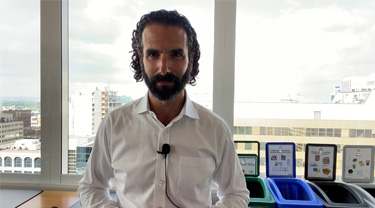Well, it’s that time again. On June 15, Export Development Canada released its semi-annual Trade Confidence Index (TCI) survey results. For more than two decades, we’ve surveyed 1,000 Canadian companies twice a year to gauge their confidence in market conditions and prospects. The result is a robust time-series that captures the voice of the Canadian exporter, providing EDC, our customers and partners with timely insights on how Canadian businesses see the challenges and opportunities ahead.
So, what do our mid-year results tell us? The good news is that after three consecutive drops, the headline TCI score increased on its weak 2022 year-end reading, up nearly five points since our last survey. Confidence improved across all regions, with gains led by Atlantic Canada, followed by Quebec, the West and Ontario. In terms of business size, it was small and large businesses that recorded the healthiest increase in confidence, with the mid-market posting a more modest increase.
While Canadian exporters aren’t as downbeat as they were in the fall, it may not be time to break out the champagne just yet. The composite TCI score is still below year-ago levels and sits well-below its long-term average of 72.9. The bounce in confidence reflects a global economy that appears to have made it through what was feared to be a tumultuous winter, thanks to swiftly co-ordinated policy measures, unseasonably warm winter temperatures and easing supply chain bottlenecks. While the global economy will likely fare better than expected this year, growth is still projected to be among the slowest experienced in recent history.
The biggest improvements were seen in perceptions around domestic and world economic conditions. The outlook for domestic sales, export sales and international business opportunities, rose only slightly. As higher interest rates begin pulling inflation closer to target, Canadian exporters appear to be more positive about evolving economic conditions than they were in the fall, but remain only cautiously optimistic around future domestic and international sales.
You should also check out
As companies worldwide navigate their way through myriad challenges, our mid-year Trade Confidence Index (TCI) shows Canadian exporters are concerned that a global economic slowdown and rising interest rates will have a negative impact on their overall business. Read this report to discover what else is top of mind for them, including their countries of interest when planning to expand overseas.
At a sectoral level, the infrastructure and environment sector experienced the largest jump in confidence since our last survey, possibly spurred by the increased focus on clean energy initiatives by many developed market governments. This was followed by the light manufacturing and ICT sectors.
The only sector to notch a decrease was the extractive sector, a second consecutive drop, as easing geopolitical volatility helped stabilize world energy markets and curb price increases from last summer’s peaks. As highlighted in our Global Export Forecast, released June 1, after two years of favourable pricing dynamics, the outlook for the extractive sector has dampened somewhat.
Despite the more upbeat outlook, businesses are still reporting significant challenges:
- almost one-third of respondents continue to experience barriers to their export and international investment strategies;
- more than half still report production being impacted by global supply chain issues; and
- inflation is negatively impacting almost three-quarters of respondents, with half expecting cost pressures to last longer than a year.
Additionally, the ongoing campaign of aggressive interest rate hikes, related financial market volatility and recent instability in the banking sector have reminded us that the outlook remains fragile. Market anxieties are making lenders even more cautious about lending, pressuring the small- and medium-sized segment, in particular. The balance of views points to a continued trend of heightened expectations around tightening financial conditions, with the Bank of Canada’s Senior Loan Officer Survey indicating that lending conditions are already at their tightest since the start of the pandemic.
With Canadian employment numbers holding up quite well, access to skilled labour also remains a persistent challenge for exporters. A very convincing majority tell us they’re having trouble accessing the skilled labour they need, increasing pressures to hike wages even further. Notably, hiring skilled labour has featured as a Top 5 challenge facing respondents in every survey since 2021.
The bottom line?
Improved exporter confidence is welcome news. But, despite the increase in our mid-year TCI scores from December 2022, confidence remains below historical levels. What’s more, there’s good reason to expect a sluggish economic backdrop through the rest of this year and into 2024. The lagged effects of interest rate hikes and tighter credit conditions will constrain some of the key drivers of growth over the next several quarters, testing exporter confidence even further.
This week, a very special thanks to Prerna Sharma, senior economist in our Research & Analysis Department.
As always, at EDC Economics, we value your feedback. If you have ideas for topics that you would like us to explore, please email us at economics@edc.ca and we’ll do our best to cover them.
This commentary is presented for informational purposes only. It’s not intended to be a comprehensive or detailed statement on any subject and no representations or warranties, express or implied, are made as to its accuracy, timeliness or completeness. Nothing in this commentary is intended to provide financial, legal, accounting or tax advice nor should it be relied upon. EDC nor the author is liable whatsoever for any loss or damage caused by, or resulting from, any use of or any inaccuracies, errors or omissions in the information provided.







